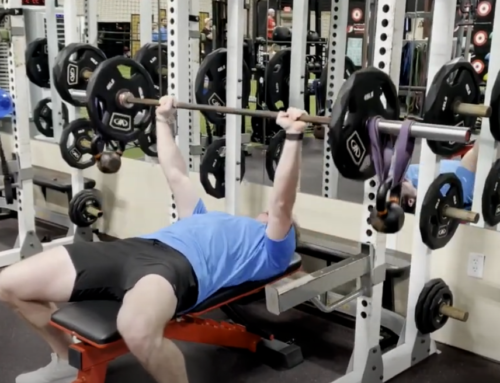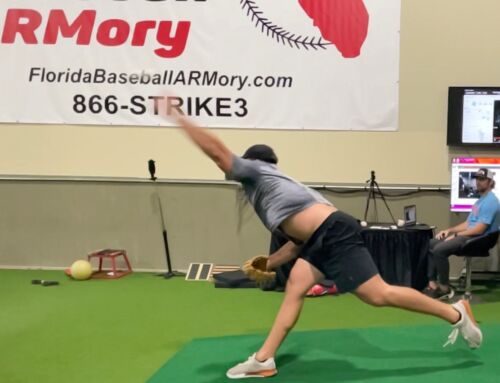
Beware The Cult Of Average.
A few years back, one of our clients sent me a link to a TED talk by Shawn Achor that got me thinking. Baseball is abuzz with the new catch phrases “science-based” and “data driven.”
“If it’s not based in science, it’s not true.”
“Make sure you have data to prove that.”
“If you can’t prove it works you shouldn’t do it.”
The terms “Science -based” and “Data Driven” have quickly become marketing tag lines for training centers across the nation.
As a physical therapist, I consider myself a scientist.
I’m all about evidence-based practice, and peer reviewed literature, but you have to be careful when you’re talking science. You see, the purpose of the scientific method is to construct an accurate, reliable, self-consistent, non-arbitrary representation of the world. In doing so it seeks to identify trends, commonalities, and averages. But the rigidity of the scientific method, while important for limiting bias and suppressing charlatanism, can also inhibit innovation, creativity, motivation and exceptionalism.
Achor illuminates the problem with the following example.
“Ask a group of scientists how fast a child can learn to read in a classroom, and they’ll change the question and ask how fast does the average child learn to read in that classroom. Then we tailor that class right toward the average. If you fall behind, we’ll work very hard to make you normal or bring you up to average…. And if you study what is merely average, you’ll only get what is average.”
I’ve written about this in the past, but here is another good example.
In the ASMI’s pivotally important and laudable landmark study titled “Risk of Serious Injury for Youth Baseball Pitchers – A 10-Year Prospective Study” (Am J Sports Med. 2011 Feb;39(2):253-7. 2010 Nov 23) researchers studied a group of five hundred 9-14 year old pitchers over a 10-year period. They determined that kids who pitched more than 100 innings in a calendar year “seemed more likely to be injured, and this trend was almost (statistically) significant.” According to the report, 4 of 29 subjects with over 100 innings logged experienced serious injury (defined as an injury requiring surgery or permanent cessation of play). 20 of 452 pitchers who did not record more than 100 innings were also injured. As a result of the study, youth pitchers were advised to reduce their risk of injury by never to throwing more than 100 innings in a year.
Even though the numbers did not quite achieve statistical significance, limiting the number of innings among youth players seems like a very good idea. I have no problem with it as a starting point. However, I think if we stop there, we’re missing some very important questions.
Consider this:
- Of the 29 heavy workload pitchers in the study, only 4 were injured. If you’re one of those 4, you probably wish you hadn’t thrown so many innings. But rather than simply pulling back the reigns on all pitchers and calling it a day, I would prefer to study the 25 pitchers that recorded over 100 innings and didn’t get hurt.
- What did those guys do to bulletproof their arms?
- What were their physical attributes with regard to mobility/stability?
- What were their movement patterns?
- What did their training, conditioning, preparation, nutrition and recovery entail?
Let’s look at those guys and use that information to help everyone find similar results. We recently experienced a similar dilemma here at The Florida Baseball ARMory (sort of). Check out the results of this study we conducted last month on the virtual significance of nothing.
In the science-based, data-driven world, this is a slam-dunk, statistically significant “line of best fit” indicating a clear trend. In the scientific community, (if the 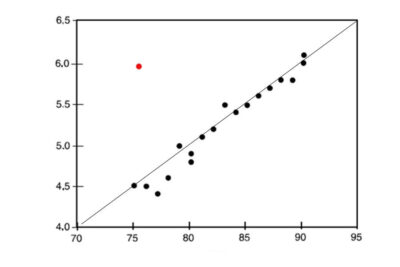 data wasn’t totally made up), this study would be indisputable and highly publishable …
data wasn’t totally made up), this study would be indisputable and highly publishable …
… Except for that one little red dot on the top …
Science would tell us to delete that outlier from the study. “It’s clearly a measurement error.”
The baseball world would tell us to ignore him as a freak – a one in a million guy that no one else could ever hope to become.
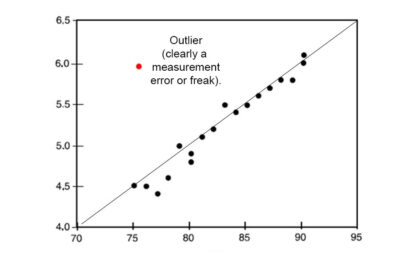 In my world, that’s the guy I want to study!!!
In my world, that’s the guy I want to study!!!
I want to find out what it is that makes that guy special.
Nolan Ryan was that guy
Max Scherzer … that guy.
Randy Johnson … that guy.
Zack Grienke … that guy.
Roger Clemens …that guy
Justin Verlander, Tom Seaver … and many more…
All THAT GUY!!
I want to study THAT GUY so my players can become THAT GUY!
While science seeks to find common denominators among the normal, it propagates what Achor calls “The Cult of Average.” Average is a code word for mediocre, and that is not our goal at The Florida Baseball Armory. If we study the outliers and freaks, instead of just focusing on the average, we can glean information that not only raises people up to the average, but also raises the average for everyone.Here’s an important question. How are we ever going to develop another 200 innings/year big leaguer if we limit everyone’s exposure to increased workload by pulling them back to the line of best fit?
On the other hand, we get calls nearly every day from distressed parents of injured pitchers. “I don’t know how he got hurt. He never went over the pitch count,” they say. They’re victims of the unintended consequences of the Cult of Average. The line of best fit — the Cult of Average — prevents those who could become hall of fame workhorses from developing, and it provides a false sense of security for pitchers who don’t yet move well enough to handle even a moderate workload.
Are you ready to become an outlier…a freak…a dominant stud with a Kevlar arm?
Then the ONLY time to do that is during the off-season.
And, that time is here…
That time is now!
That is exactly what our SAVAGE Extended Training Program is all about.
Between today and February 12th, when most of our pro guys will (hopefully) jet off to spring training, there are approximately 110 training days available (excluding weekends and holidays).
The time to get started is right now!
Many high school students are engaged in virtual learning, and fall seasons have been suspended.
Colleges players from every level are locked into on-line education and baseball has been postponed indefinitely
Pro guys not in the big leagues are stuck in limbo waiting for updates on their futures.
There has never been a better opportunity for taking your game to the highest level imaginable.
It’s time to get to Lakeland and lock in 3-5 hours per day of world-class, life-changing training.
After completing a world class 9-phase assessment, your hyper-individualized daily program will include a nutrition plan, a variable dynamic warm-up, a customized throwing program, a Superhuman power building workout, mobility, arm care, recovery segments, a SAVAGE weight training program tailored just for you, and individualized Broga (yoga for dudes). We’ll pre and post test you with Track Man and NewtForce Sensored Mound data, and give you a daily program you can use every day after you leave.
You’ll bulletproof your arm and overcome every possible limitation keeping you from achieving the freakish success you’ve been missing.
CLICK HERE or call us at 866-787-4533 and let us set up a program designed specifically for you.
Let’s break up the cult of average!
We’ll see you at The ARMory.
Can’t travel at all? We got you. Learn more and register for our SAVAGE Satellite Training Program by CLICKING HERE
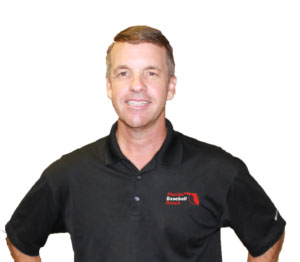
Randy Sullivan, MPT, CSCS CEO, Florida Baseball ARMory



